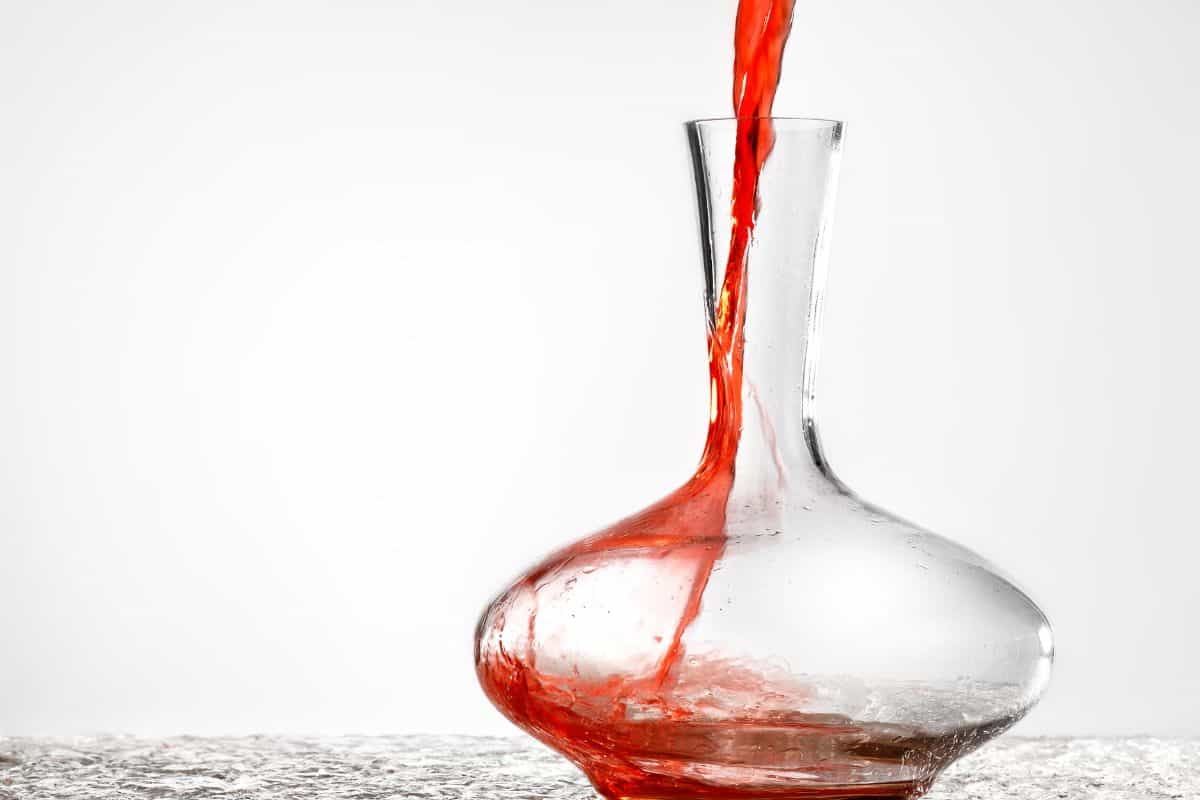If you are a fan of wine and the many ways that it is presented, then you have almost certainly heard or seen a decanter at some point in time.
Whether it is at a gathering, or appearing on the silver screen as a beautiful decoration of some wealthy aristocrat or other members of high society.
Decanters are an important part of the culture that surrounds wine, and many households that love their fermented grape juice of choice love to display their drink of choice in these beautifully crafted objects.
However, many people who are unfamiliar with wine etiquette or history, or even the history of decanting in general, may struggle to understand what thee are used for.
After all, to the unknowing eye, what separates a decanter from any other ornate glass.
Not only that but many experts and connoisseurs of wine may even struggle to properly explain it for themselves, which doesn’t exactly help clear up confusion.
So, that’s what we are here to discuss and clear up today. To help out those who are starting their wine journey, as well as clear up some details for those who know their wine, we are going to explain what exactly a wine decanter is.
From the decantation process, to how and when you should use one of these items for your wine.

What Is A Decanter?
So, before we get any further, we should probably first go over what exactly a decanter is.
Despite what the many ornate designs that you can find out in the world might suggest, a decanter is quite a simple device that is pretty easily understandable.
In short, as the name suggests, a decanter is designed to hold the decantation of whatever liquid it is holding from the sediment that may be with it, and has been used for this purpose for thousands of years, with documented use being found as far back as ancient Rome.
Whilst a variety of materials have been used and made to be decanters, with various materials such as bronze, gold, silver, and even pottery being used throughout history, most modern types of decanters are made of either crystal or glass, with their transparent material allowing people to see the beautiful color of the liquid they hold.
Whilst most designs that you will see today are highly ornate and filled with intricate patterns, it is also easy to find simple glass decanters that are more functional.
In terms of the kind of liquid they hold, decanters are used to hold a wide variety of alcoholic drinks.
Historically, wine has been the principle drink that decanters are used for, but the increasing popularity of spirits such as whiskey, scotch, rum, and a variety of other spirits.
What Is Decantation
So, we have learned that a decanter decants. Not the most shocking revelation, but true nonetheless.
However, what confuses many people, especially about the need for decanters, is the process of decanting itself.
What is so important about the process that it needs a separate vessel for itself? To clear the air, we’re going to need to explain what decantation is as well
Decantation is the process of separating two substances, usually, either two liquids that don’t mix naturally, or solid objects in a liquid that are suspended in it.
That makes sense, but many people may be wondering why wine or another spirit needs to be decanted. After all, they have already been through the process of fermenting and making them, what else needs to happen.
Well, as many aficionados of these kinds of drinks will tell you, a lot of the character and flavor of an alcoholic drink, whether it is red wine or a bourbon whiskey, comes as much from the vessels that they are fermented and aged in as the ingredients themselves.
This is often why some brands will describe their drink as ‘aged’ by several years.
However, in the case of more aged wines and other drinks, sometimes the barrels that they are stored in can contain sediment from the inside of a barrel.
Although most of it will often be filtered out through the winemaking process, some drinks may still contain some remains.
Because of this, a decanter historically would have been useful for allowing these sediments to rest on the bottom, leaving the rest of the liquid good for serving.
Whilst most modern winemaking processes these days have improved in capturing errant sediment, a decanter can be very helpful if an older wine barrel was used for its fermentation.
Plus, just look at some of the designs out there today! Why would you not want them to hold your wine?
When And How To Use A Decanter
So, now that you know what these items are for, perhaps you are interested in using one for yourself.
If so, these are some things that you should keep in mind when using them.

Let The Wine In The Decanter Breathe
Before serving a glass of wine from a decanter, allow the wine to be in contact with the air for a few minutes, by releasing the stopper, if it has one.
This will allow the flavor of your wine to interact with the oxygen in the air, allowing you to experience the full palate of your chosen wine.
Many Uses For A Decanter
Whilst decanters have historically been used for drinks such as red wine, scotch, or whiskey, don’t let tradition stop you from trying out decanting with other drinks.
Many spirits and wines, even dry white wines, will interact and alter their flavor slightly based on how much oxygen they receive, so feel free to experiment.
Final Thoughts
As you can see, a decanter isn’t just a beautiful piece of craftsmanship, but also a potentially vital piece of serving gear to have. Plus, they just look great, so don’t hesitate to get one for yourself today!
- How to Learn Wine Tasting: Essentials for Beginners - March 10, 2024
- How to Learn to Like Wine: Cultivating an Appreciation for the Vintner’s Art - March 10, 2024
- Thanksgiving Sangria: A Flavorful Twist to Your Holiday Table - August 27, 2023
